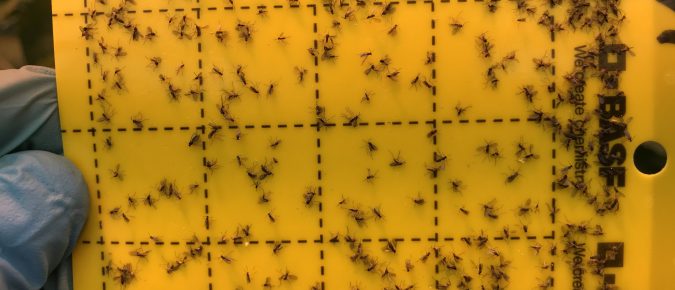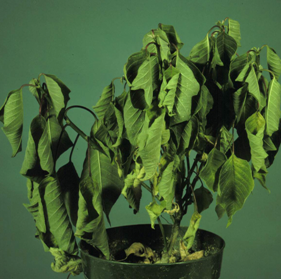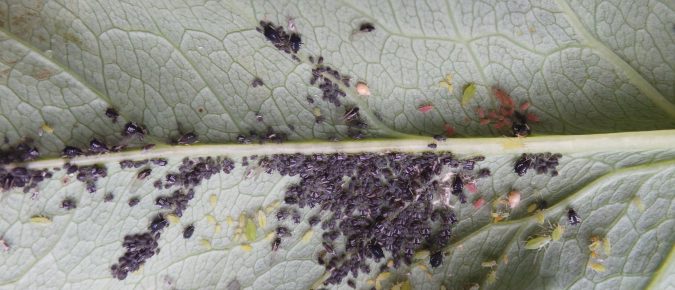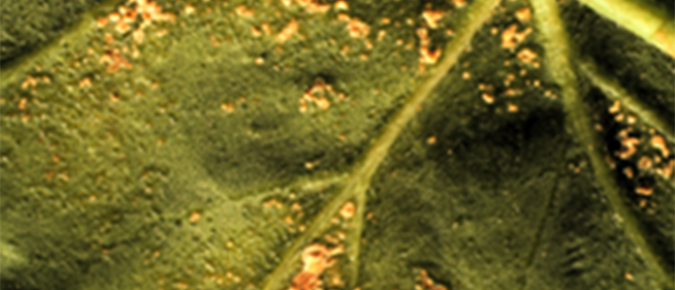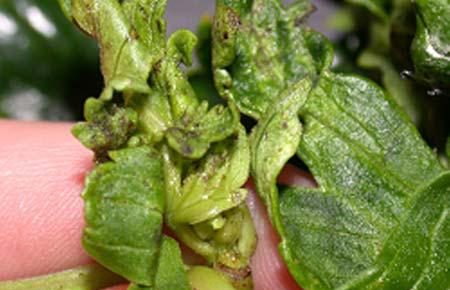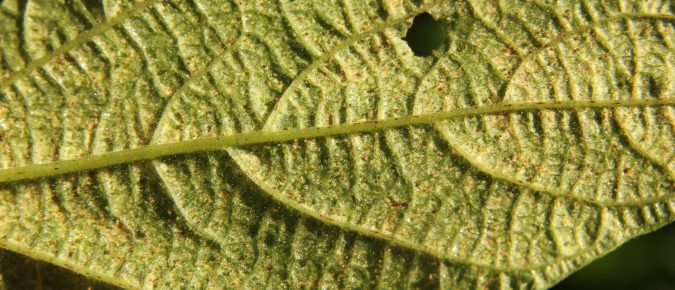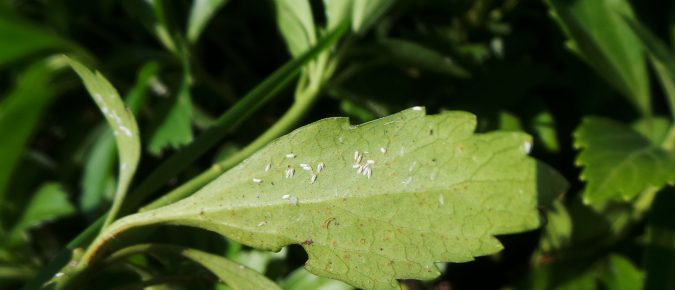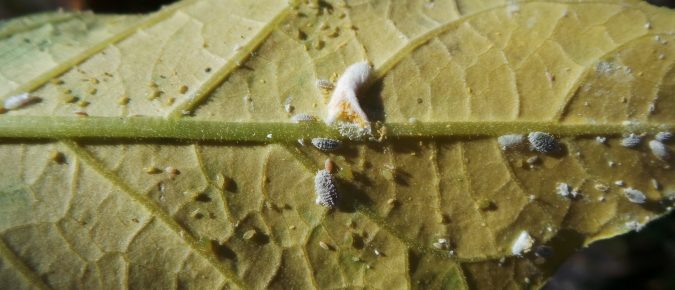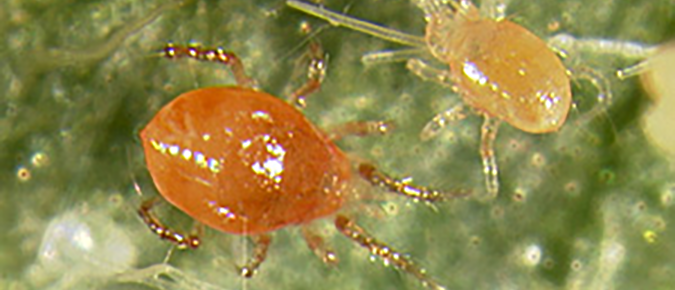Fungus gnats (Family Sciaridae) are insects commonly associated with overwatered houseplants. They can become a nuisance when they are present in large numbers and fly around inside a home. In most situations, fungus gnats are a cosmetic problem. However, on occasion, fungus gnat larvae can cause plant damage.
Gray mold (or Botrytis blight) is a common and often serious fungal disease that can affect plants of all kinds. Learn more in this factsheet.
Root rot is a general term for any disease that causes the deterioration of a plant’s root system. Learn more about root rots and how to avoid them in this factsheet.
Aphids are really fascinating insects, with bizarre lifestyles and eating habits Learn more about this large group of insects and how to manage them in the garden in this article…
Edema is a physiological disorder that affects houseplants, greenhouse plants, and other plants sheltered under plastic. Learn about these fluid-filled “blisters” on leaves in this factsheet.
Cyclamen and broad mites are xtremely small and can infect plants in greenhouses and gardens. Learn the symptoms and management options in this factsheet.
The most common spider mite, the twospotted spider mite, is a general feeder that attacks a wide variety of plants. Learn about its biology and management in this article…
Scale insects are often overlooked because they are immobile and look like small bumps that just might be plant parts. Learn more about this group of inconspicuous and atypical insects in this article…
If you see fluffy-looking white blobs on your houseplants, you probably have an infestation of mealybugs. These are soft-bodied insects that have a waxy material covering their bodies. There are many different species of mealybugs that commonly occur on a wide variety of plants. To learn more about these pests and how to control them, read this article…
Did you know that there are mites that eat other mites? Barely visible to the naked eye, these little predators help keep spider mites and other pests in check. Read on to learn more about this fascinating world of tiny predatory mites…

